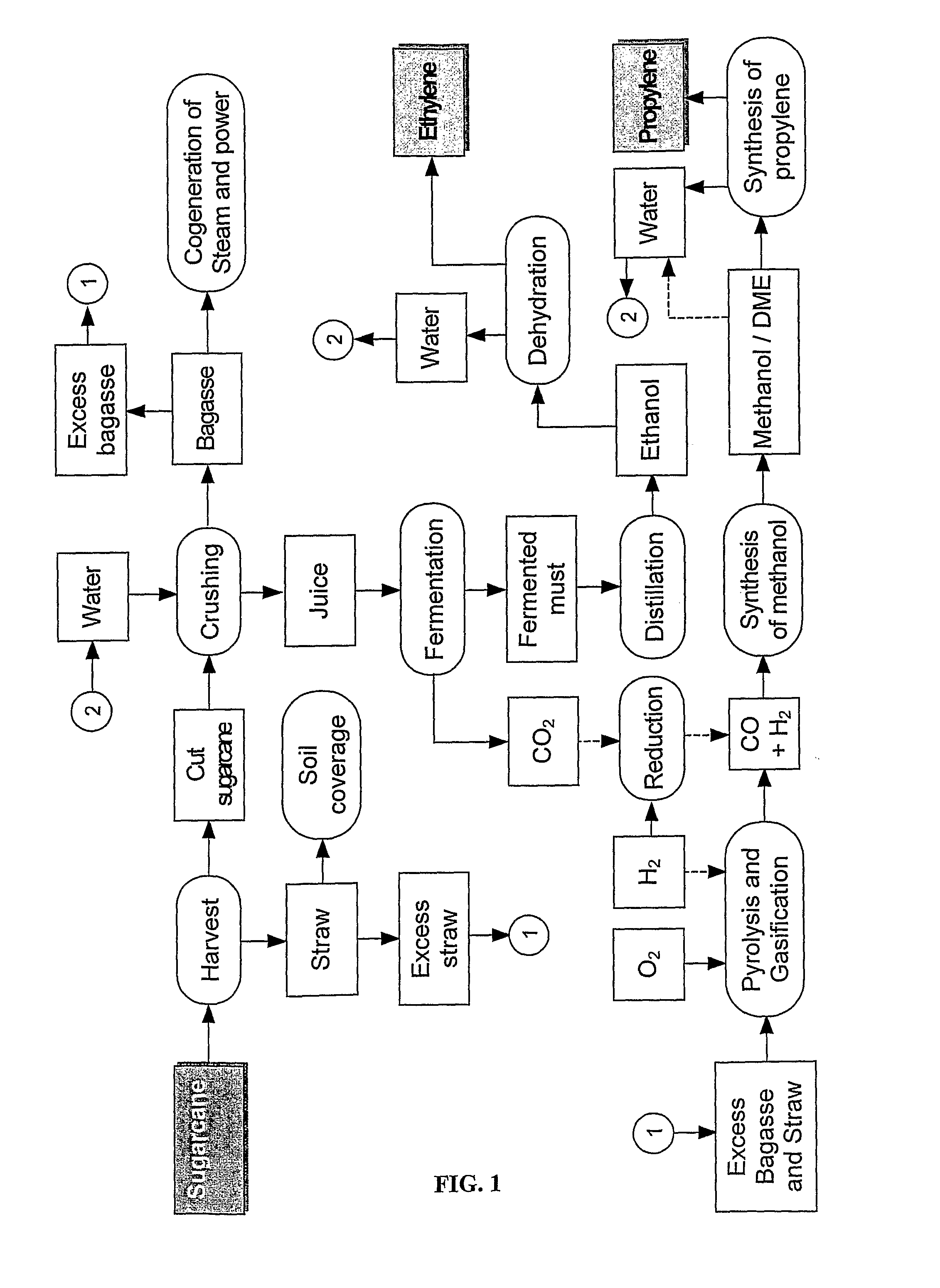Method for the production of one or more olefins, an olefin, and a polymer
a technology of olefins and polymers, applied in the direction of gasification process details, liquid hydrocarbon mixture production, combustible gas production, etc., can solve the problems of high production cost, limited properties, and high capital cost of propylene, and achieve the effect of low cos
- Summary
- Abstract
- Description
- Claims
- Application Information
AI Technical Summary
Benefits of technology
Problems solved by technology
Method used
Image
Examples
example 1
[0096]In EXAMPLE 1 there is contemplated the production of ethanol and the dehydration thereof to produce ethylene from sugarcane, integrated with the production of propylene from residues originated from the processing of the sugarcane. All the percentages indicated herein are weight percentages.
[0097]Using a mechanical harvester, there were harvested 1,000 tons of sugarcane containing 13.0% fermentable sugars (sucrose, glucose and fructose), 13.7% bagasse and 14.0% leaves and plant tips. The bales, containing the total amount of sugars and bagasse, were placed on specific flatbed loaders and 50% of the leaves and tips of the sugarcane plants were placed on auxiliary flatbed loaders. The remaining 50% of the leaves and tips of the sugarcane plants, that constitute the sugarcane straw, were dispersed over the soil forming a dead cover to preserve the moisture thereof. The bales and the leaves together with the plant tips were transported to the distilling facility.
[0098]Upon being r...
example 2
[0108]A sample of the propylene obtained in EXAMPLE 1 was mass-polymerized in a reactor with 4 liters of capacity, at 70° C. and at a pressure of 30 bar, using a Ziegler-Natta catalyst. After 2 hours of reaction, there were produced 310 grams of polypropylene.
[0109]The polymer thus obtained was subjected to a test to determine its carbon-14 content following the test method prescribed in the ASTM D 6866-06 standard. The result of the test indicated that the polymer had a natural carbon content equal to 100%.
PUM
| Property | Measurement | Unit |
|---|---|---|
| pressures | aaaaa | aaaaa |
| temperatures | aaaaa | aaaaa |
| pressures | aaaaa | aaaaa |
Abstract
Description
Claims
Application Information
 Login to View More
Login to View More - R&D Engineer
- R&D Manager
- IP Professional
- Industry Leading Data Capabilities
- Powerful AI technology
- Patent DNA Extraction
Browse by: Latest US Patents, China's latest patents, Technical Efficacy Thesaurus, Application Domain, Technology Topic, Popular Technical Reports.
© 2024 PatSnap. All rights reserved.Legal|Privacy policy|Modern Slavery Act Transparency Statement|Sitemap|About US| Contact US: help@patsnap.com









